Cheese Fans, How Many Different Types Have You Tried?
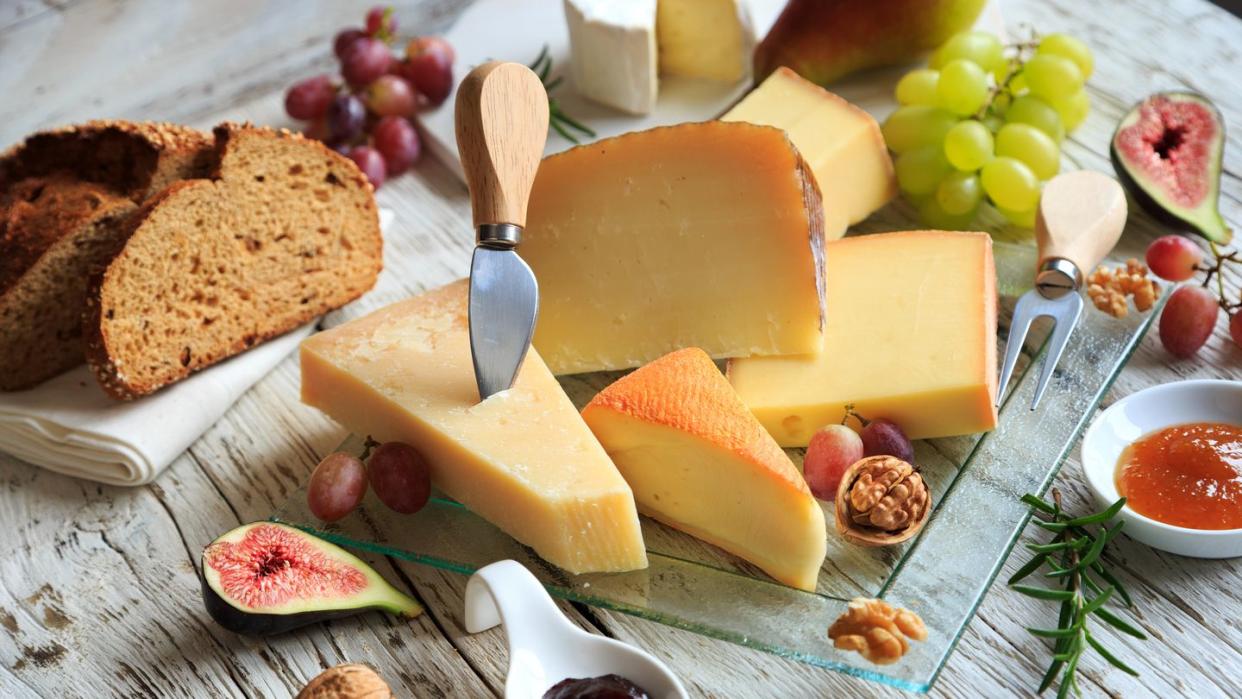
"Hearst Magazines and Yahoo may earn commission or revenue on some items through these links."
Where would we be without cheese? We certainly wouldn't have cheese party dips, epic charcuterie boards, or our favorite pizza recipes. Cheese, in all it's creamy, tangy, savory glory, simply makes life more delicious. But you may be shocked to learn just how many different types of cheese exist in the world. It's estimated that there are more than 2,000 varieties of cheese in the world, which makes sense for a food that's been around for centuries. Here, we've rounded up 30 of the most popular ones. Snag a new variety on your next trip to the supermarket and you may just find a new favorite!
First things first, let's have a little cheese-making lesson: Did you know that every type of cheese starts the same way: with milk? Sometimes it's the milk of a cow, other times it's from a sheep, goat, or even a water buffalo. Then, different agents are introduced into the milk, which cause the milk to solidify and separate into curds and whey. The solid curds become the cheese. But that's where similarities end, because every type of cheese is different in flavor and texture. Some, like cheddar and jack, are best suited for a dish like Ree Drummond's classic macaroni and cheese. Others, such as soft brie, can be baked in the oven and served warm with crackers or crusty bread for an easy appetizer.
Cheese can completely transform a dish—so check out our guide of the most popular types of cheese, grab your cheese grater, and start picking your favorites.
Become a bonafide cheesemonger:
American Cheese
American cheese is made with a blend of varieties, including cheddar and Colby. It also contains milk byproducts that make it supremely melty while keeping it from separating or turning greasy like other cheeses might. That's what makes it the classic burger topping!
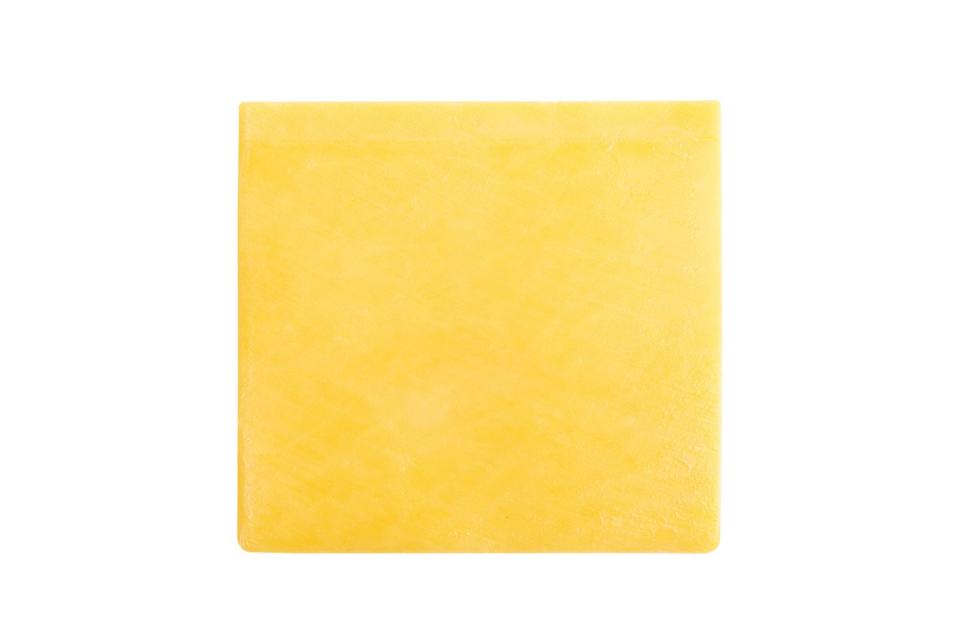
Asiago
An Italian cow's milk cheese, Asiago can be found in two varieties: pressed or ripened. Pressed asiago has semi-soft, creamy texture with a sweet and nutty flavor. This is the kind you'll most likely find sliced and placed on charcuterie boards. Ripened asiago is aged, harder, and saltier. It's more like parmesan and can be grated to top things like pastas and salads.
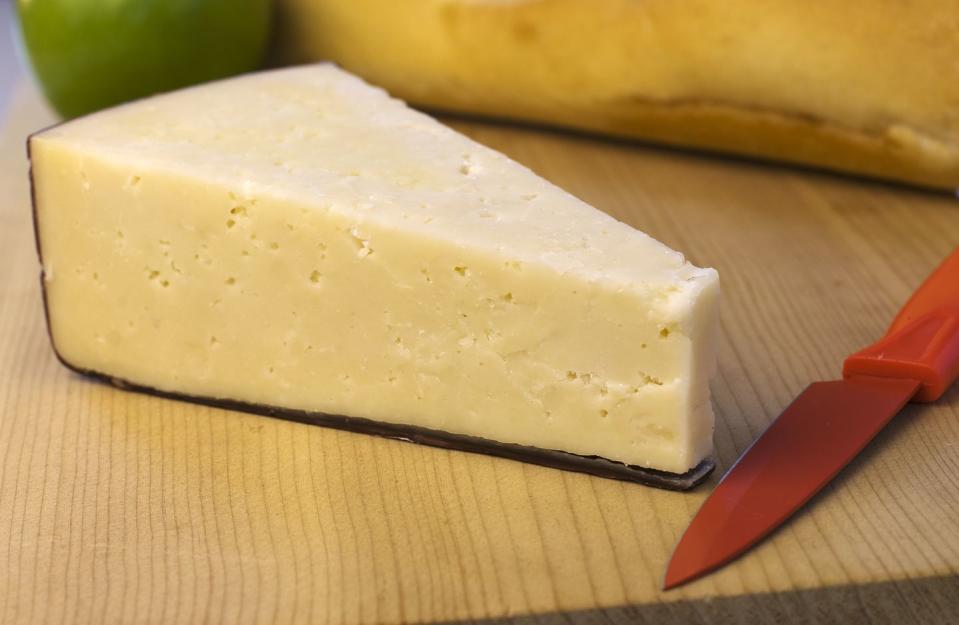
Blue
You either love blue cheese or avoid it at all costs. It has a sharp, salty, funky flavor! The secret to this cheese's pungent taste is actually a strain of mold called penicillium that is injected into cheese made with cow's, sheep's or goat's milk before it is aged. You can find it in many varieties, including French Roquefort cheese made with sheep's milk, Italian gorgonzola, and Stilton, an English blue cheese.
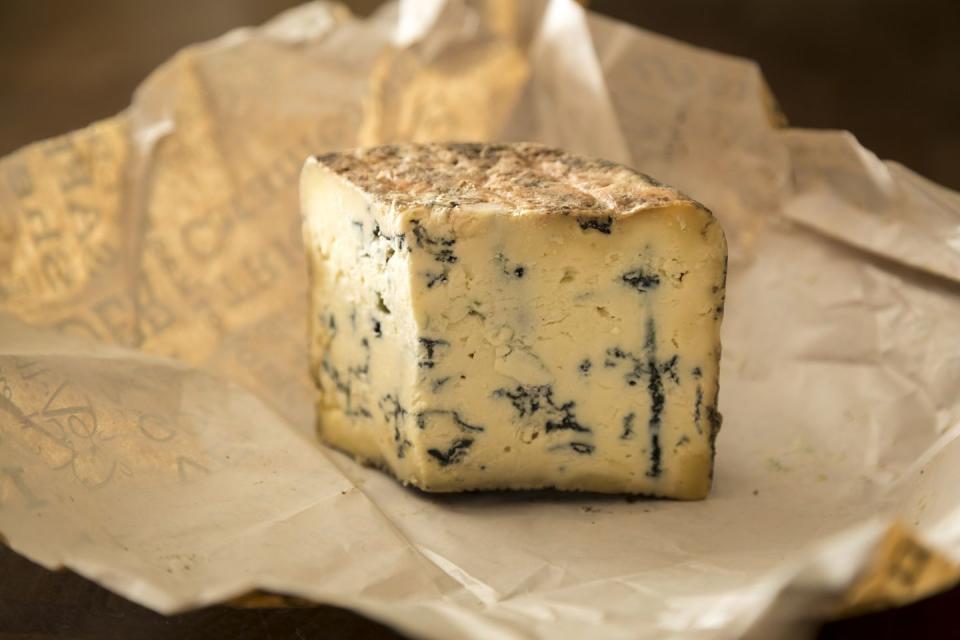
Brie
Rich, buttery, and deliciously creamy, brie has an edible rind and smooth, soft middle. This type of cheese is typically made with cow's milk. In fact, cream is added during the production process to make it even more rich and luxurious. It is scrumptious chilled, but baked brie is also fantastic, especially when topped with honey and herbs.
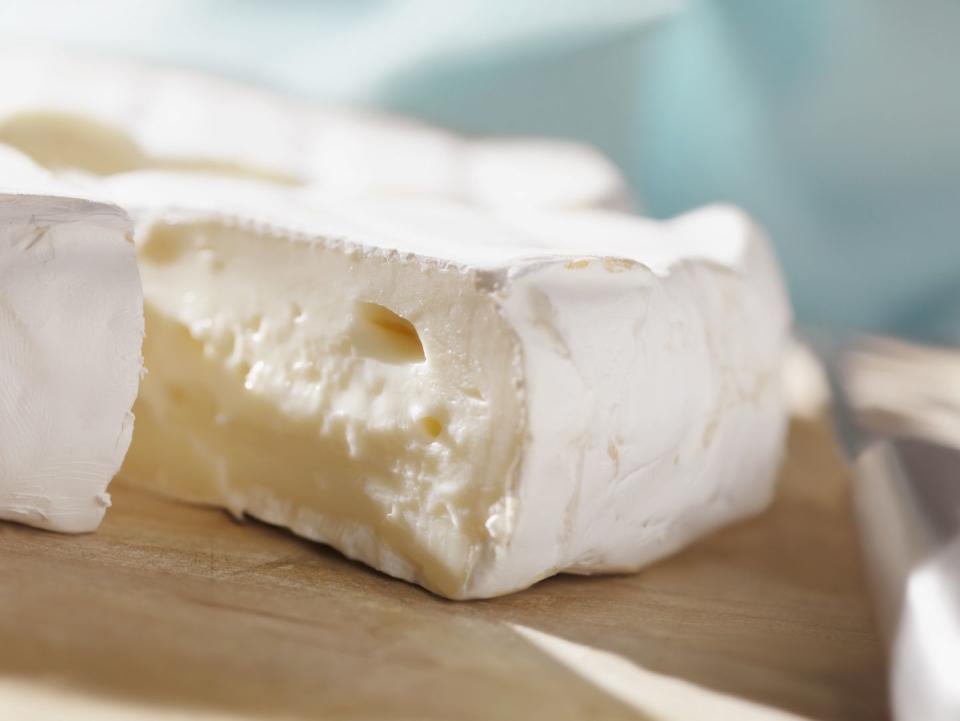
Camembert
Camembert and brie share a lot of similarities, but these two French cheeses have their differences, too. Camembert has a richer, bolder flavor and is denser than mild, runny brie. With big buttery, mushroom notes, it's scrumptious spread on crusty bread.
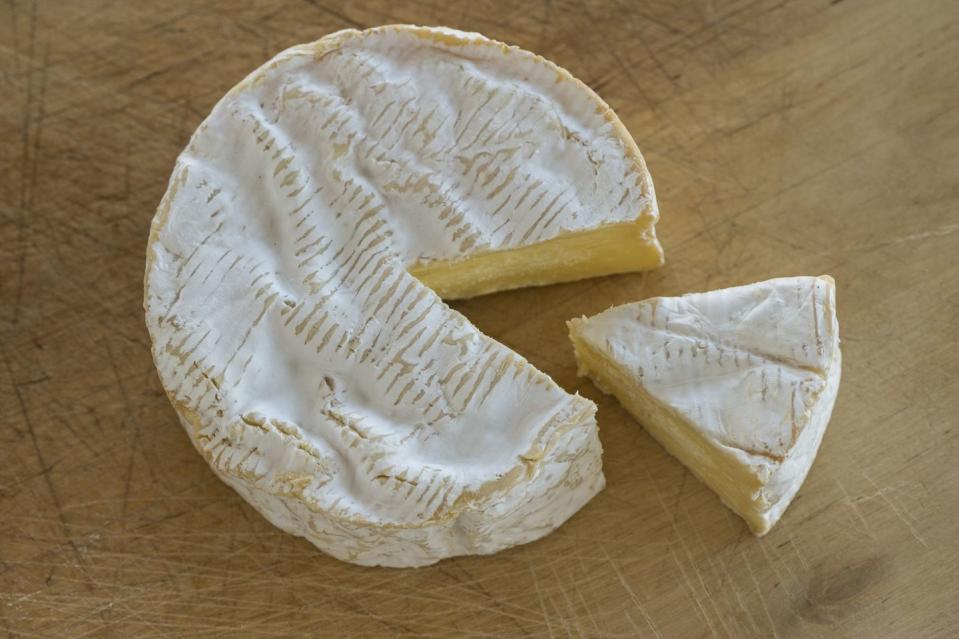
Cheddar
A cow's milk cheese that originally hailed from England, cheddar is insanely popular in the United States. Young cheddars are milk and creamy while aged cheddars have a stronger, more complex flavor and crumbly texture. The most interesting thing about cheddar, though, is how it's made: Once the curds are separated from the whey, the curds go through a "cheddaring" process where they are broken up to expel air and liquid before being stacked and pressed together to age.
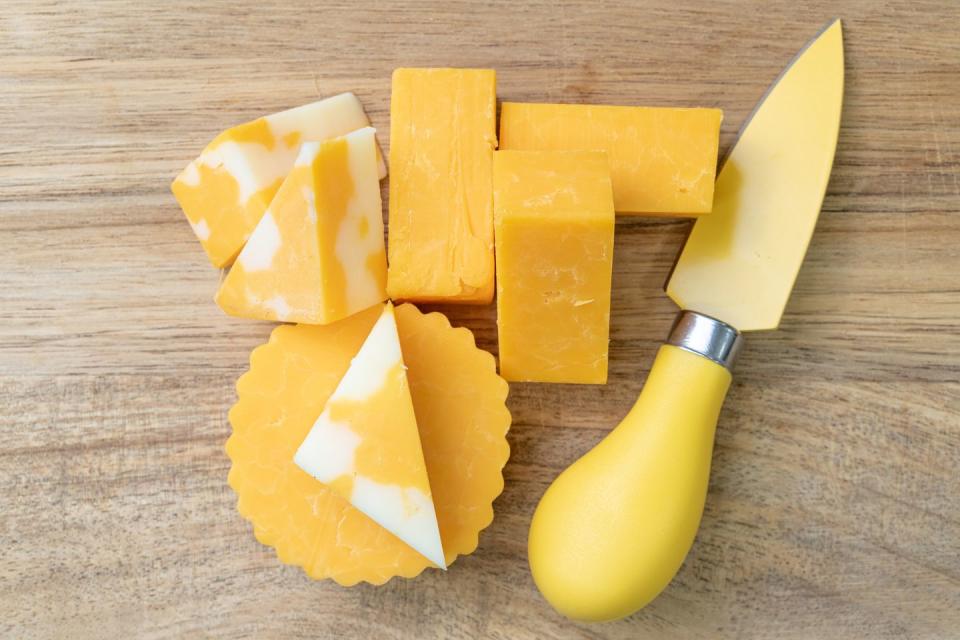
Cotija
This strongly tangy, salty cheese comes from the Mexican state of Michoacán. It has a rich, milky texture, but this cheese doesn't melt. That's why it's almost exclusively used as a topping or garnish on things like salads, enchiladas, tacos, and elote (aka Mexican street corn).
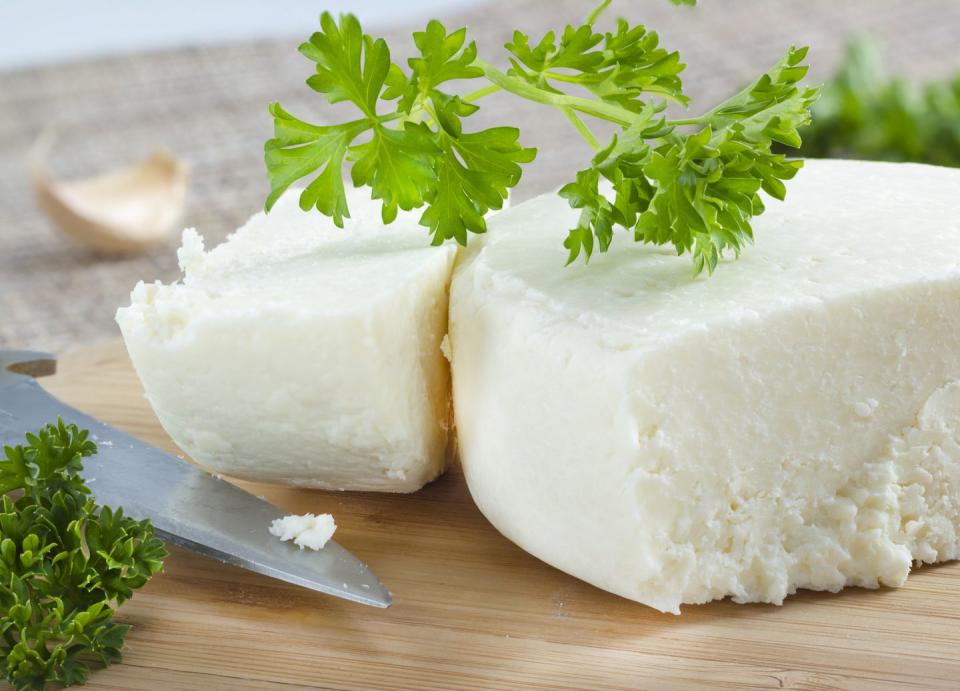
Cottage Cheese
Cottage cheese has been having a moment lately, and it's about time. This fresh cheese has a mild, milky flavor and is protein-packed. Cottage cheese is made by adding acid to pasteurized cow's milk which causes the curds and whey to separate. The curds are rinsed, (sometimes) salted, and packaged.
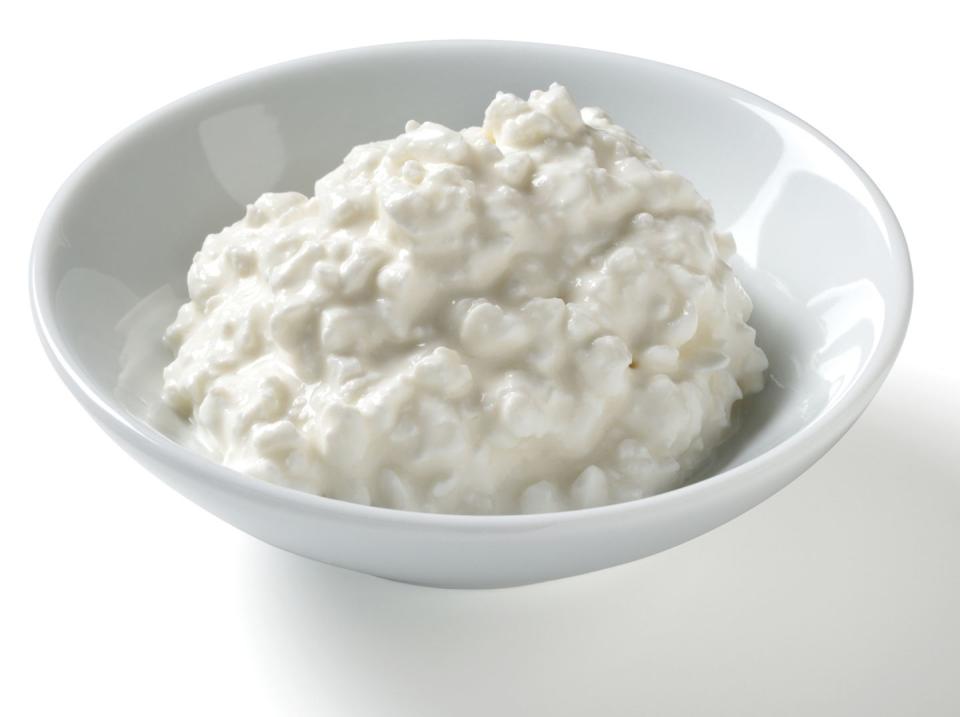
Cream Cheese
Smeared onto a bagel or whipped into your favorite party dip, cream cheese is a smooth, creamy, fresh cheese that's a staple in many American homes. This cheese was invented by a New York state dairyman in the 1870s. He used a combination of milk and cream in his cheese-making process. Once the whey is drained off, the curds are stabilized and pureed, resulting in the cream cheese we know and love. Similarly, Boursin is essentially a French cream cheese that is flavored with herbs and spices.
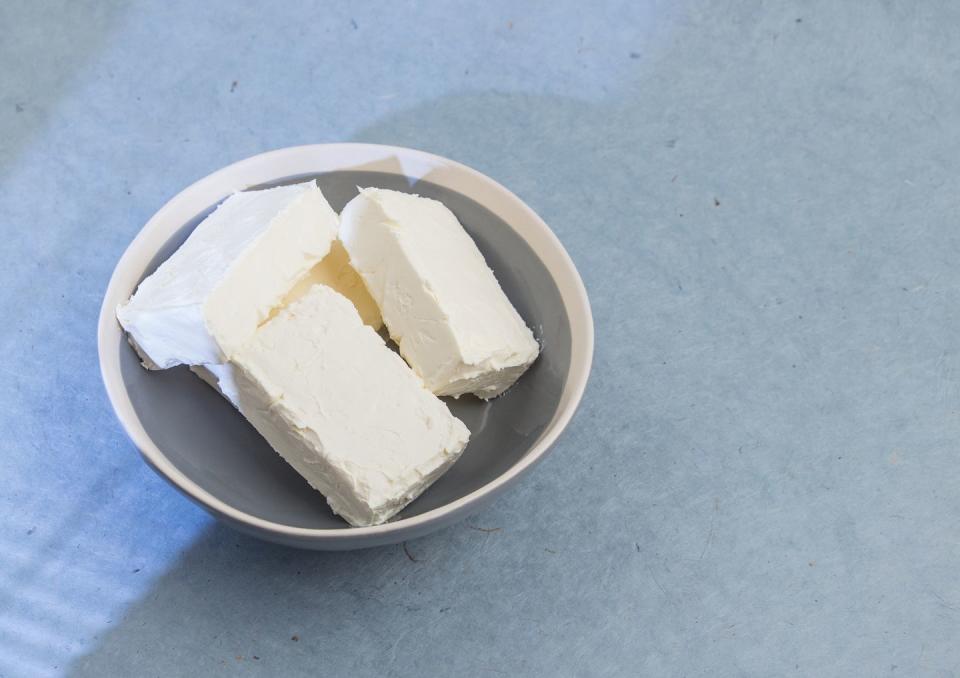
Edam
This semi-hard Dutch cheese is made using sweet curds from part-skim milk, meaning no acid is used so that the natural sweetness of the milk comes through. It's sealed in edam's signature red or black wax and has a slightly sweet and nutty flavor along with a smooth, soft texture. Babybels are a French version of edam cheese.
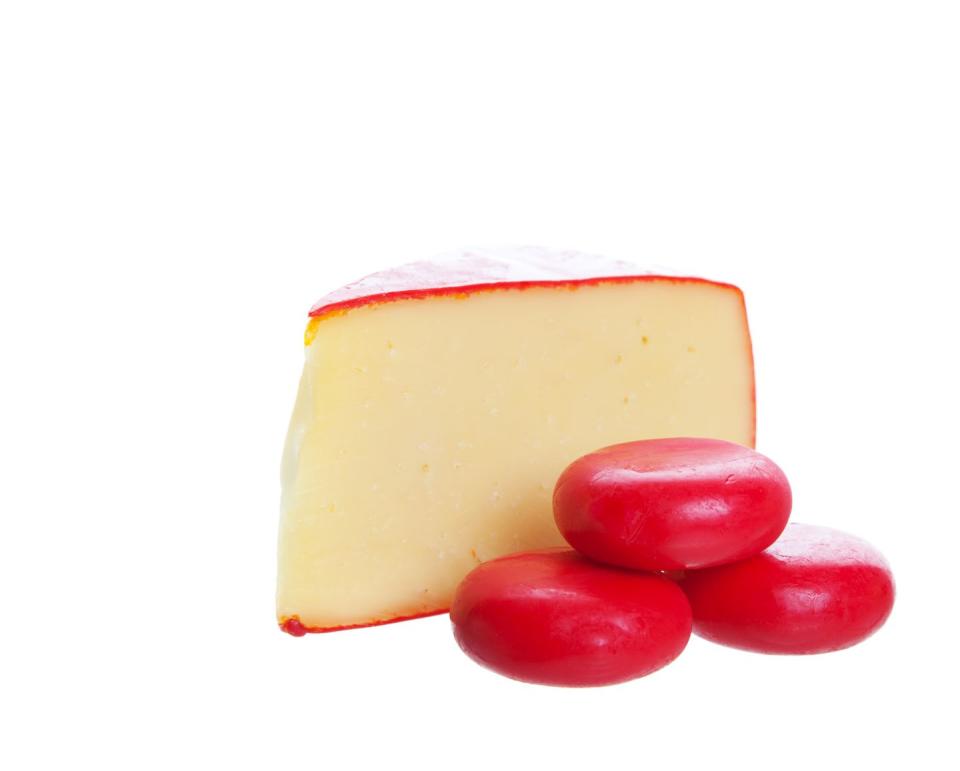
Feta
A soft Greek cheese made traditionally from sheep's milk, feta can also be made using goat or cow's milk. This salty, briny cheese is known for its rich, creamy texture that will soften when heated, but won't melt.
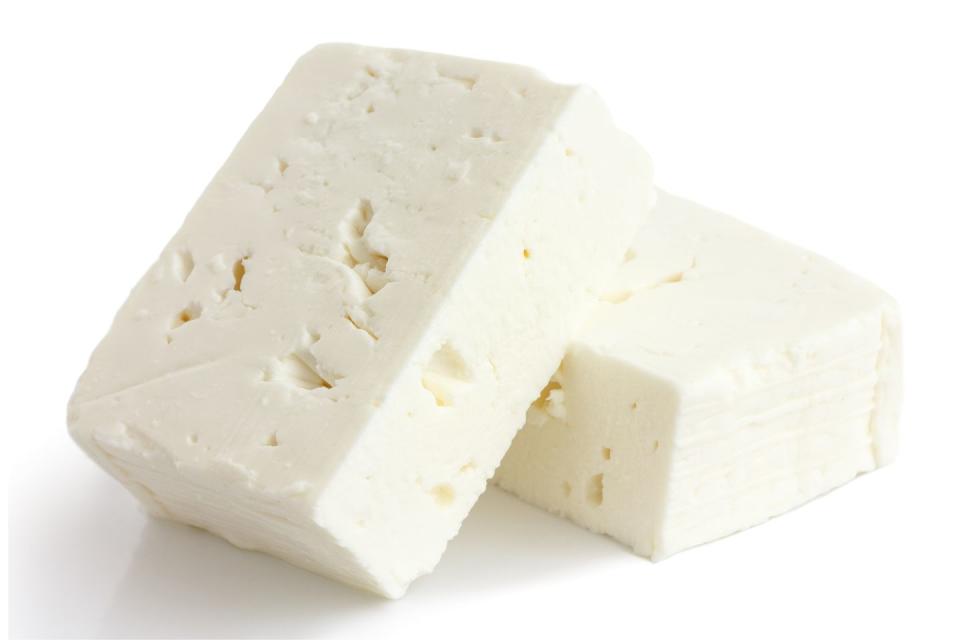
Fontina
Traditional Fontina cheese is from the northwest of Italy. However, other countries like Denmark, Sweden and the United States have started to make their own fontinas from cow's milk. Like other cheeses, younger fontinas are sweeter and more mild in flavor with a smoother texture—perfect for grilled cheese and casseroles. Older fontinas are drier and more crumbly, and they're delicious grated or shaved over a variety of dishes, including salads, risottos, pastas and soups.
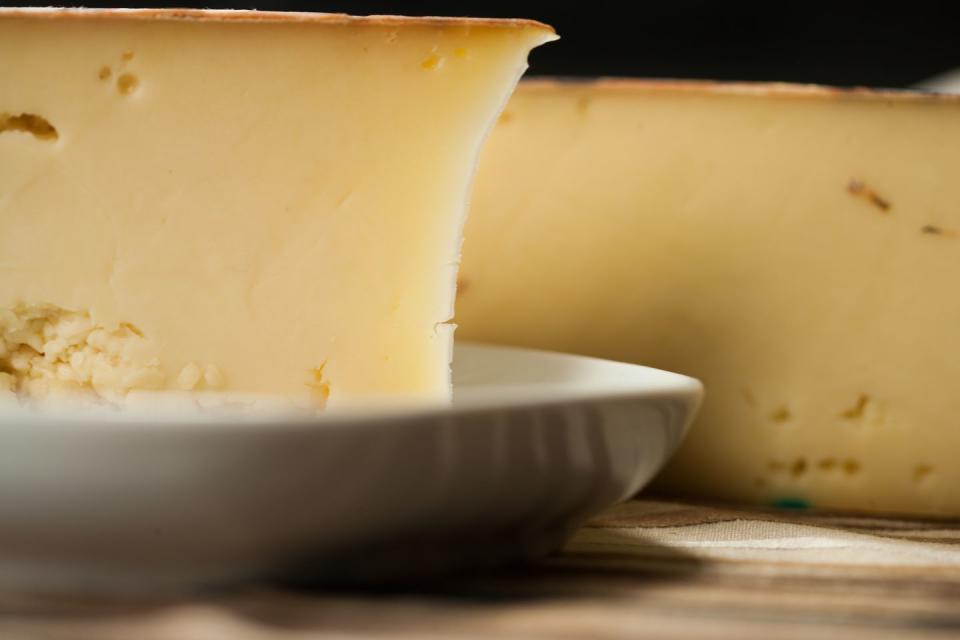
Goat
Goat cheese is just that—cheese made from goat's milk. It is generally softer than cheese made from cow's milk and far more tangy, due to the presence of fatty acids that give goat cheese its unique flavor.

Gouda
One of the oldest cheeses on record, this Dutch classic dates back as far as 1184. It is a semi-hard cheese typically made from cow's milk and is known for its springy texture and rich, caramelized flavor. Younger goudas make for a pleasant table cheese; older goudas will be more crystallized looking, and tend to have a deep, nutty, buttery flavor.
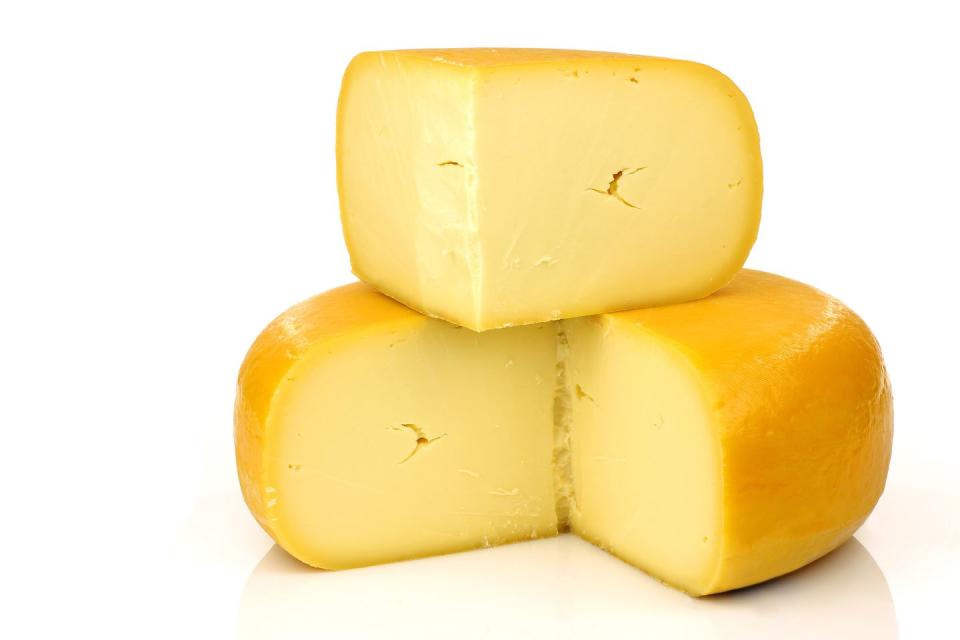
Grana Padano
Grana Padano is Italy's most produced cheese—nearly 24% of the country's cow's milk production is reserved for this household staple. It's made with part-skim milk and matures faster than Parmigiano-Reggiano, which is made with a mixture of part-skim and whole milk and takes a minimum of 12 months to mature. Grana Padano is packed with flavor and is a great grating cheese—it's also naturally lactose-free, thanks to its production process.
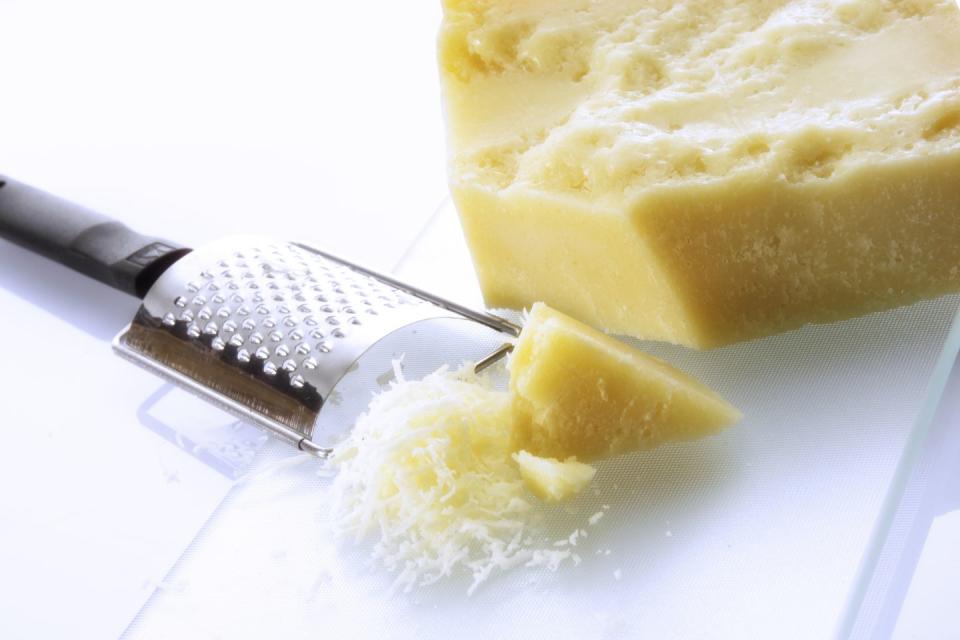
Gruyère
A true Swiss cheese, gruyère is a firm cow's milk cheese named after the town where it was originally made. It's a favorite table cheese, perfect for any cheese board, but it's also beloved for its melting properties. Gruyère is the gold standard when preparing fondue and it is also the cheese used to make French Onion Soup and croque monsieur.
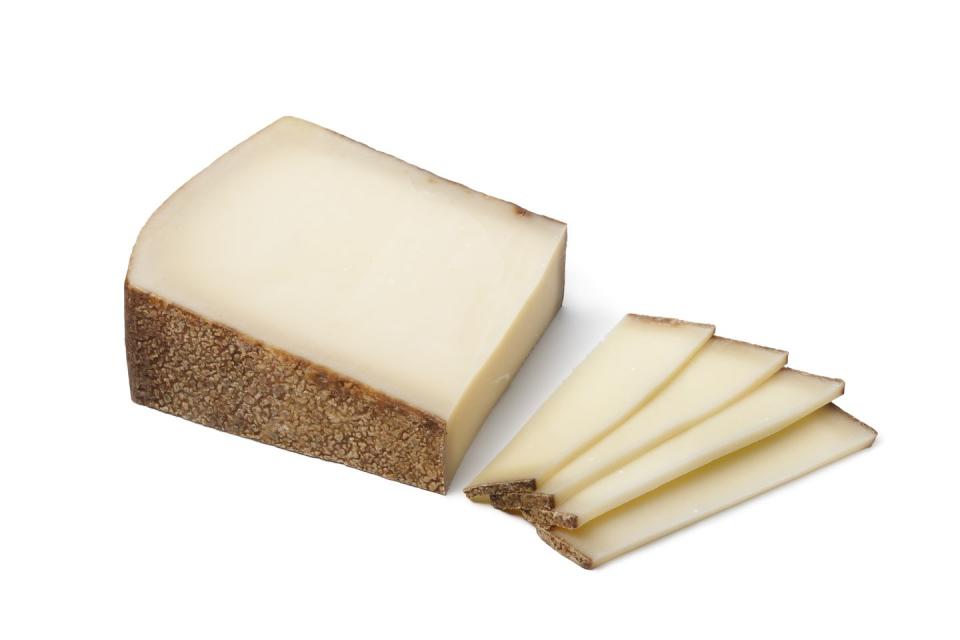
Halloumi
If you've ever wanted to actually grill cheese, pick up some halloumi on your next grocery store run. A Cypriot cheese made traditionally from goat and/or sheep's milk, halloumi is similar to mozzarella in texture (squeaky and bouncy), though it's tangier and saltier in flavor. It can be eaten raw, but halloumi is most often reserved for cooking or grilling, as its exterior browns and crisps up nicely while holding in a soft, melted interior.

Havarti
This Danish cheese is the result of a female cheese-maker's quest in the mid-1800s to make an ultra-creamy, semi-firm cheese. Featuring a smooth and creamy yet mild flavor, havarti is often sold seasoned with other herbs and spices, like dill and caraway seeds.
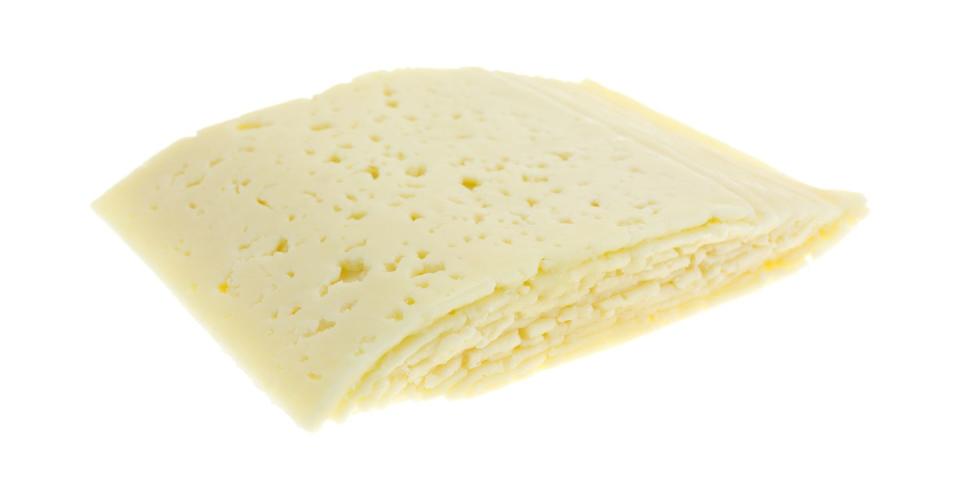
Manchego
Spain's most popular cheese, manchego is made from sheep's milk in the La Mancha region, just south of Madrid. This is not a cheese that melts well, so it's often served as tapas alongside bread, olives and Serrano ham or paired with a sweet quince paste known as membrillo.
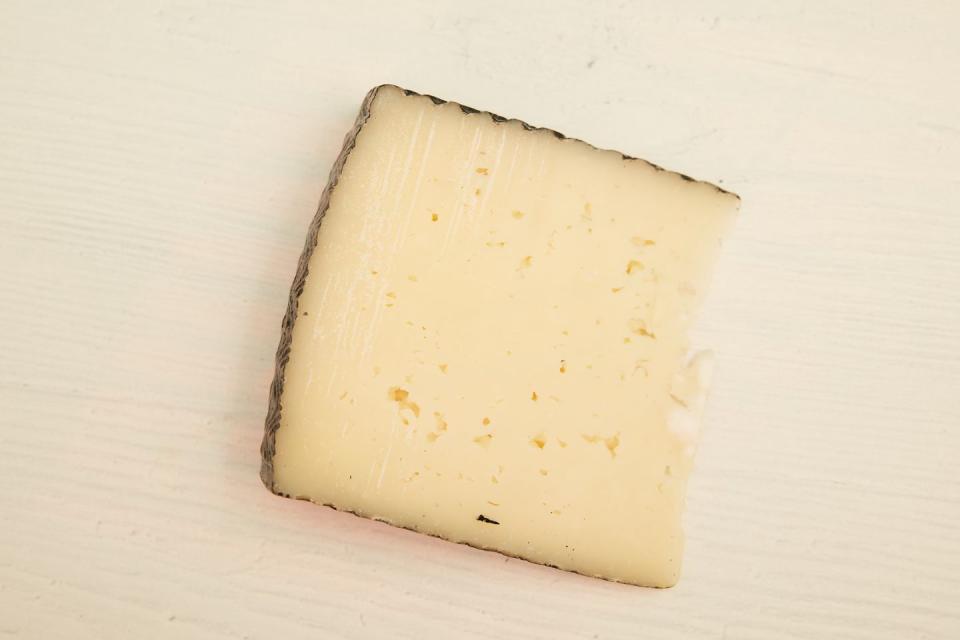
Mascarpone
Essentially an Italian version of cream cheese, mascarpone is best known for holding all the layers together in tiramisu. It has nearly twice the butterfat of standard cream cheese, which means it basically melts in your mouth. Though slightly sweet in flavor, mascarpone can be used in savory dishes as well as sweet, similar to the versatility of cream cheese.
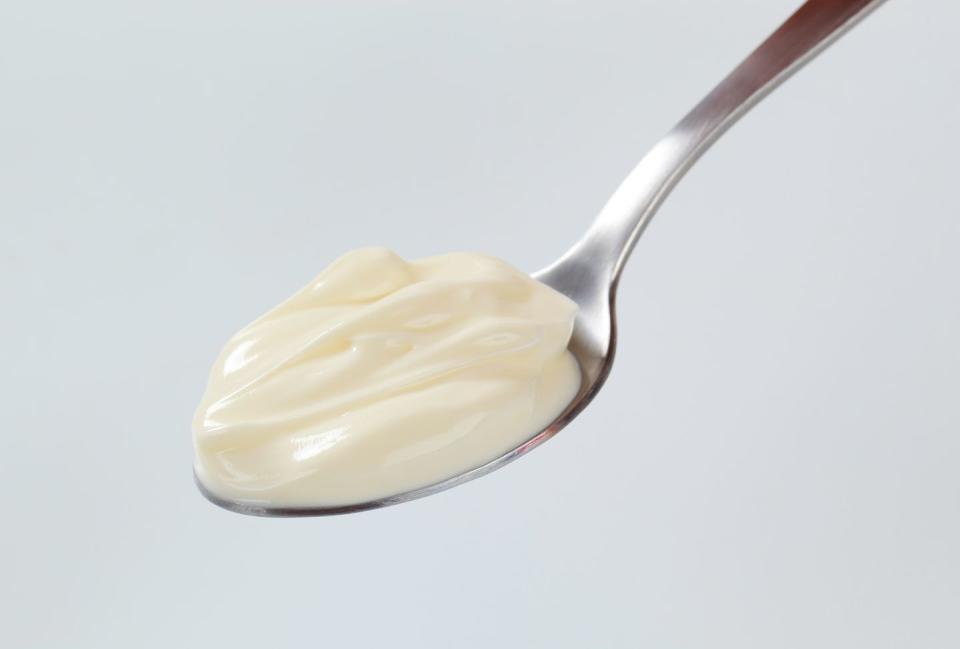
Monterey Jack
This classic semi-firm American cheese is named after the coastal California town where it originated. Made from cow's milk and mild in flavor, monterey jack also serves as the base for other cheeses, like pepper jack and colby.
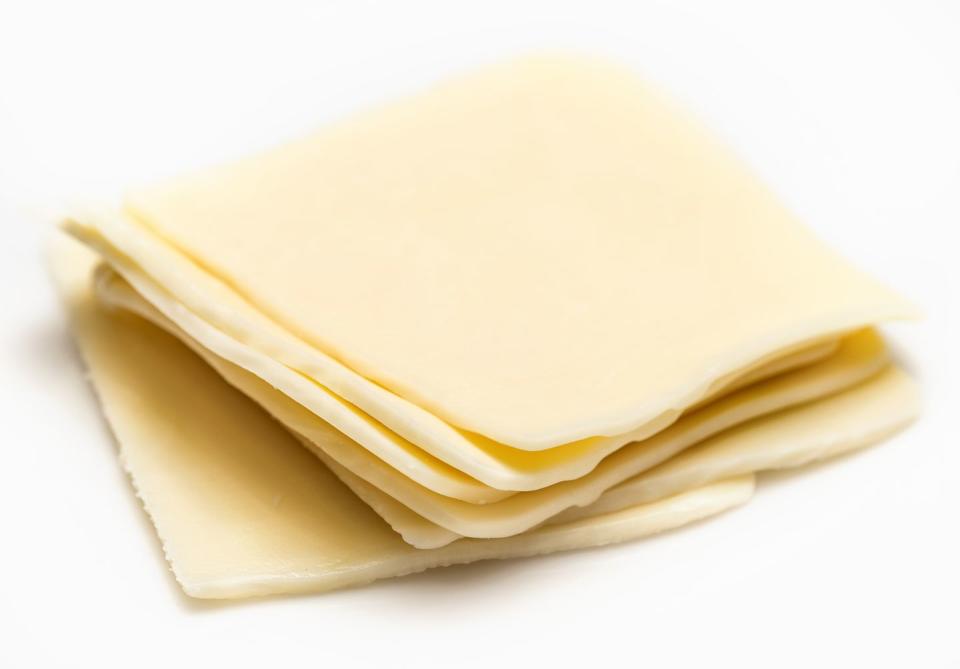
Mozzarella
Mozzarella is traditionally made from the milk of cows or water buffalos. To make it, fresh curds are cooked in order to expel more whey, before being stretched and stored in water to cool. This mild Italian cheese comes in many forms including bocconcini (bite-sized mozzarella balls), burrata (a firm mozzarella shell encased around cream-soaked mozzarella bits), and even string cheese.
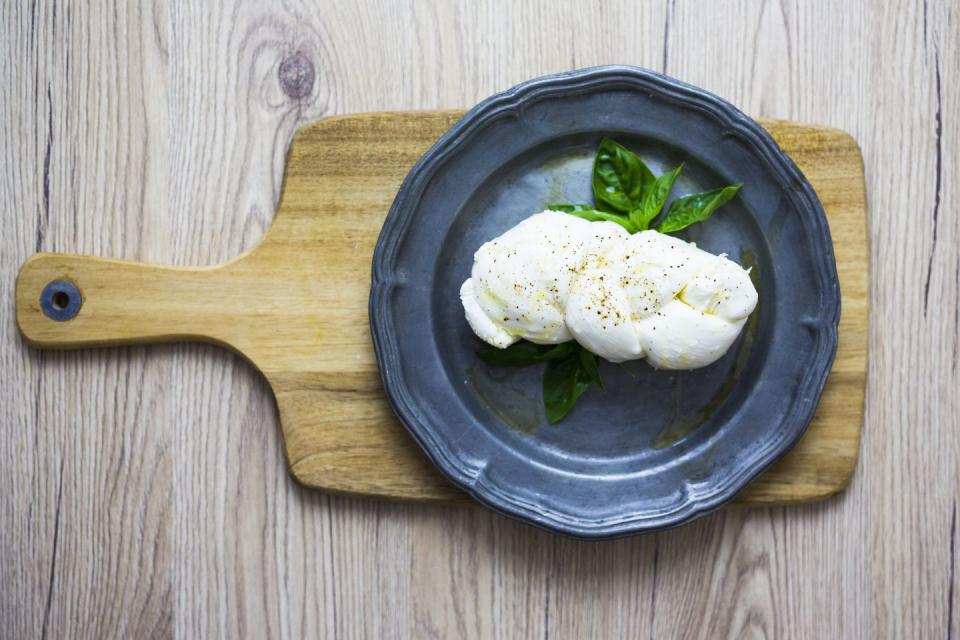
Muenster
This semi-soft cow's milk cheese is an American version of French munster cheese. It has a smooth, creamy texture not unlike havarti. Its signature orange rind is made from vegetable coloring added during the cheese-making process. Though it has a pungent aroma that intensifies with age, muenster cheese is actually very mild in flavor and it melts well, making it a favorite for burgers, grilled cheese, and mac and cheese.
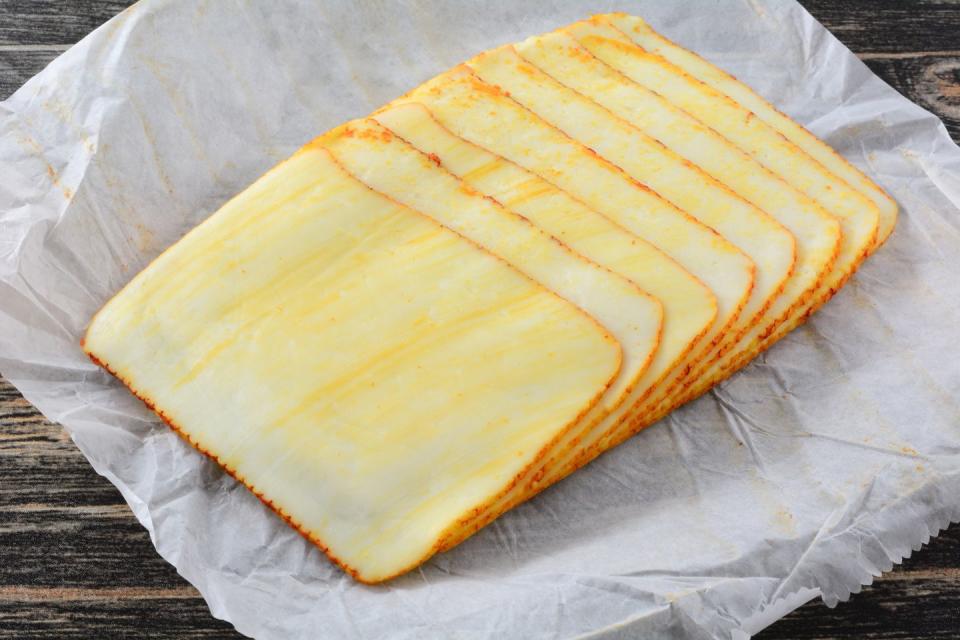
Paneer
Paneer is a soft fresh cheese made from cow or buffalo milk, and it's common in Indian cuisine. It doesn't melt and is often cut into cubes and grilled, fried or stirred into curries. Because of its soft, spongy texture, paneer tends to absorb the flavors of the other ingredients in a dish. One thing to keep in mind when cooking paneer is that you don't want to overcook it and dry it out, which will leave the cheese with a rubbery texture.
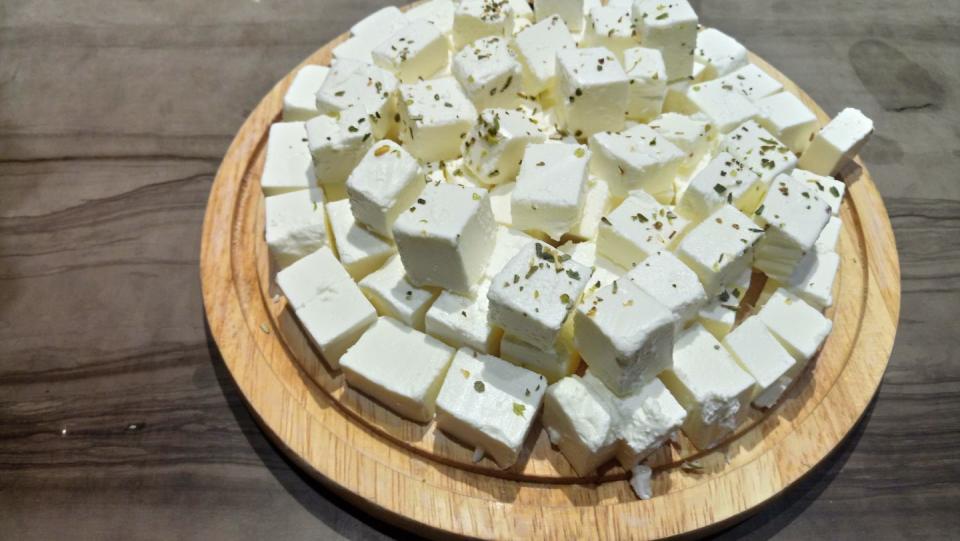
Parmigiano-Reggiano
Parmigiano-Reggiano comes from cow's milk and has been dubbed the "King of Cheeses" by Italians. This cheese needs a minimum of 12 months to mature. Its sweet, nutty, umami-laden notes are the key to many Italian dishes, including soups, pastas, and risottos. In order to be called Parmigiano-Reggiano, the cheese must be made in designated regions of Northern Italy. Parmesan is made in the same spirit, but does not need to meet the same standards required of traditional Parmigiano-Reggiano.
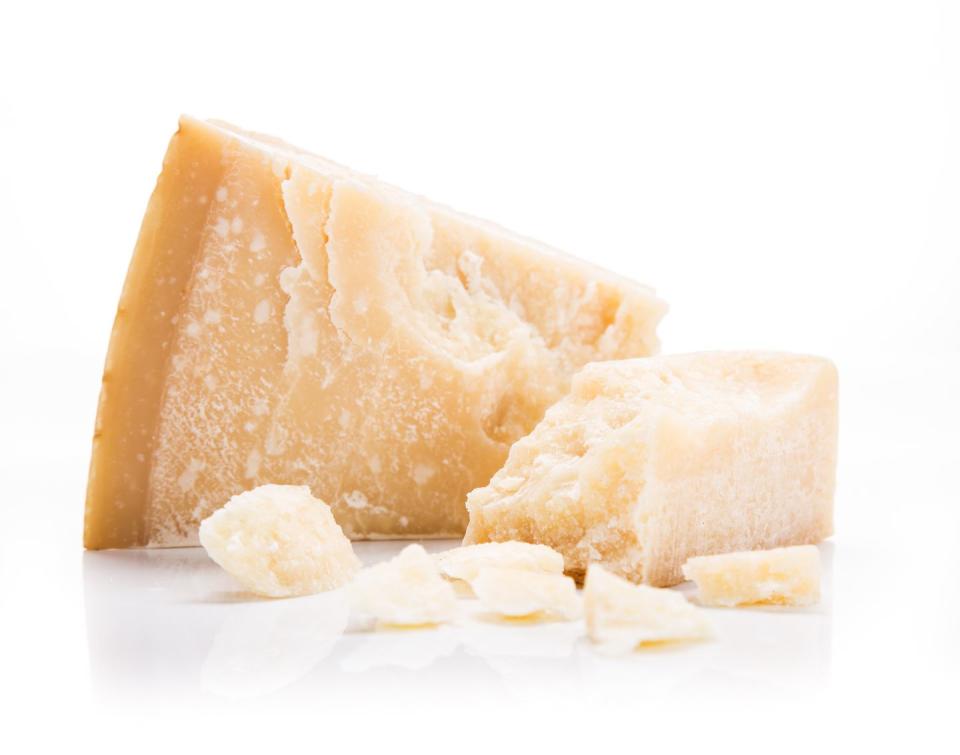
Pecorino Romano
This sheep's milk hard cheese is made in Sardinia, Italy. It is more pungent and tangier in flavor than Parmigiano-Reggiano. For that reason, it is often grated over tomato-based dishes, where the acidity may overwhelm the sweet nuttiness of Parmigiano-Reggiano.
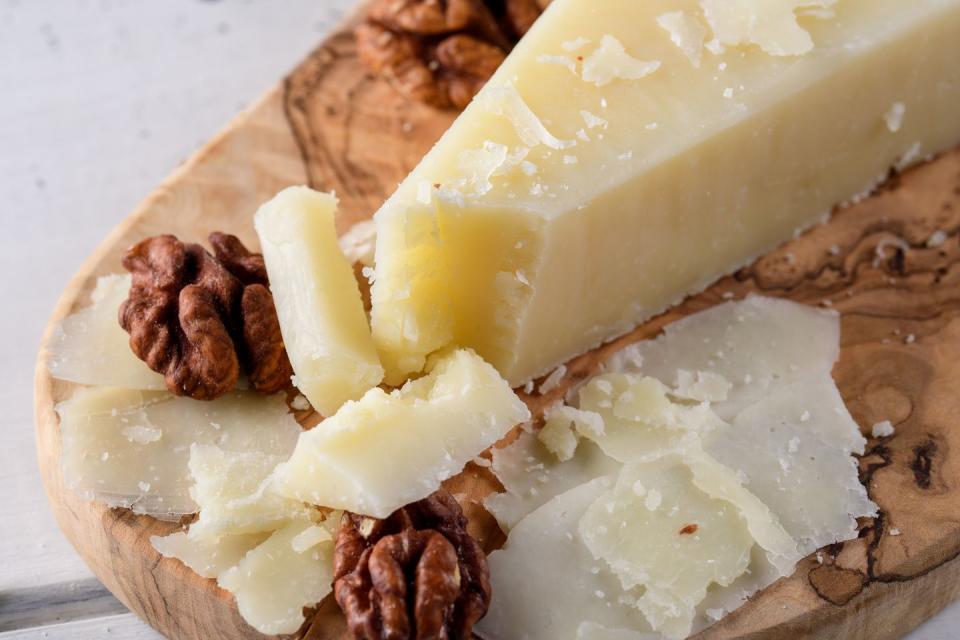
Provolone
Typically made from cow's milk, provolone is a classic Italian cheese from Southern Italy that is made in the same style as mozzarella. Both cheeses have that stretchy, meltable quality that makes them delicious as a pizza topping or melted onto hot sandwiches. There are two types of provolone—provolone dolce and provolone piccante. Provolone dolce is aged only for a few months, resulting in a more mild, sweeter flavor; provolone piccante is aged for six to twelve months and is sharper and tangier.
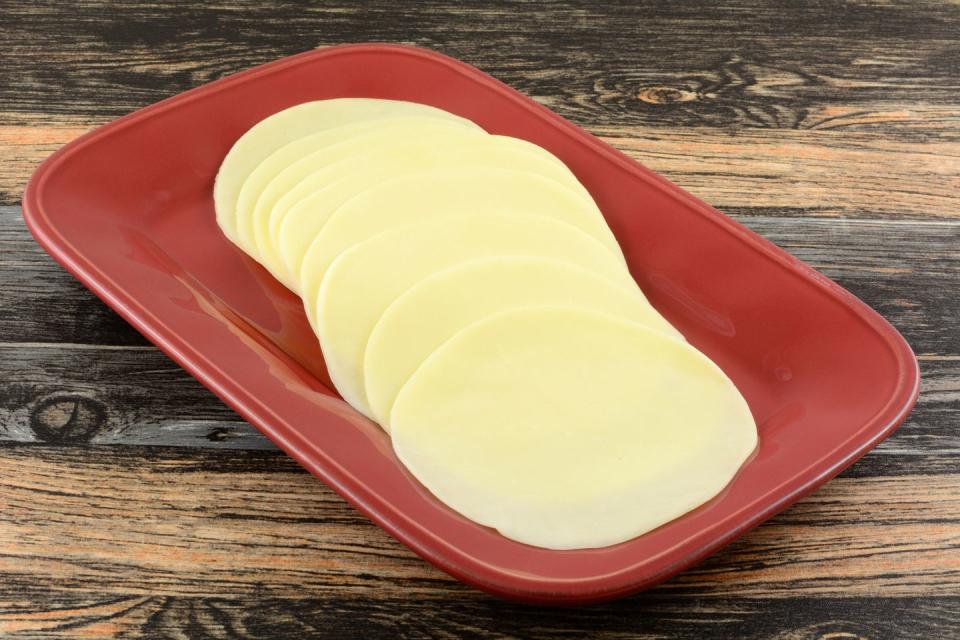
Queso Blanco
This fresh crumbly cheese is often used in Mexican or Latin American dishes like enchiladas and arepas and is beloved for its tangy, salty flavors. Spanish for "white cheese," queso blanco does not melt, making it ideal for dishes where you want the cheese to hold its shape. This also makes queso blanco suitable for grilling and frying.
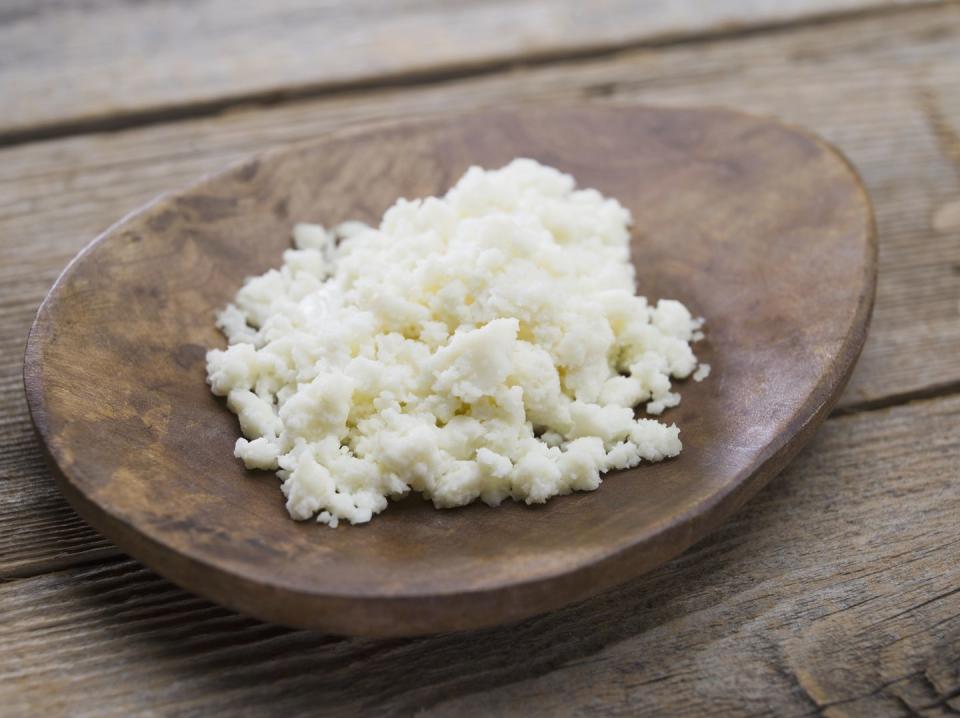
Ricotta
This fluffy Italian cheese is traditionally made from the leftover whey separated from the curds used to make cheese. However, these days, the mild, slightly-sweet ricotta we buy in stores tends to be made from whole milk instead of whey. There's a lot of moisture in ricotta, which means it's highly perishable compared to drier aged cheeses—but it can be used to make the lasagna of your dreams. Note that ricotta salata is a completely different texture: This aged, pressed cheese is drier, more crumbly and much saltier. It's ideal for grating onto salads or pastas.
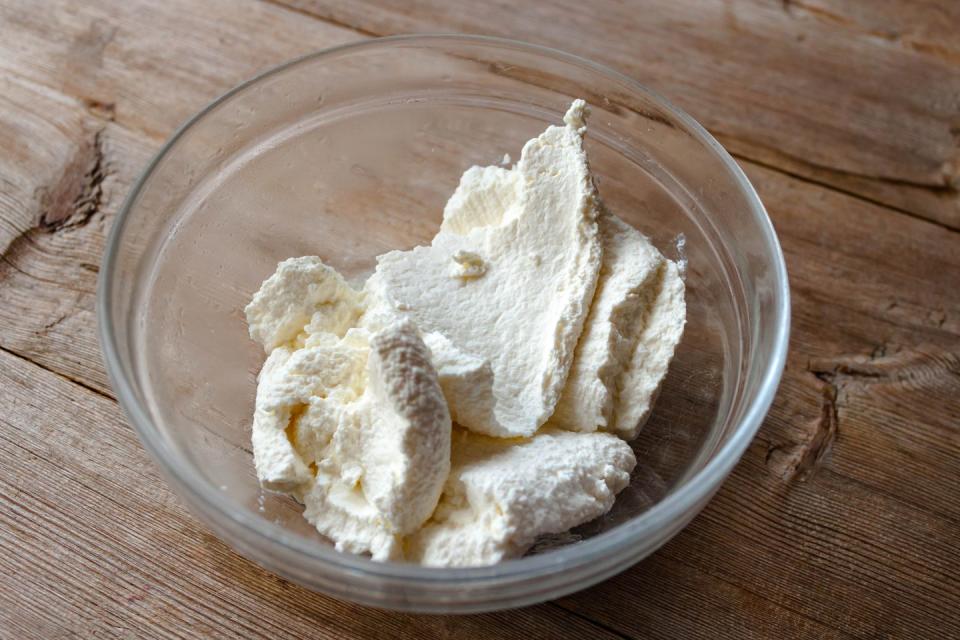
Swiss
What Americans consider Swiss cheese—a pale, semi-hard cow’s milk cheese with distinctive holes—would more accurately be described as a riff on a traditional Swiss cheese known as emmenthal. American Swiss cheese tends to be more mild in flavor and lacks the rind developed in traditional Swiss cheeses. Gruyère is another popular traditional Swiss cheese, and jarlsberg, which is often confused for American Swiss cheese, is actually a cross between the emmenthal and gouda. Whether domestic or imported, Swiss cheese melts well, making it an ideal candidate for fondues and burgers or sandwiches.
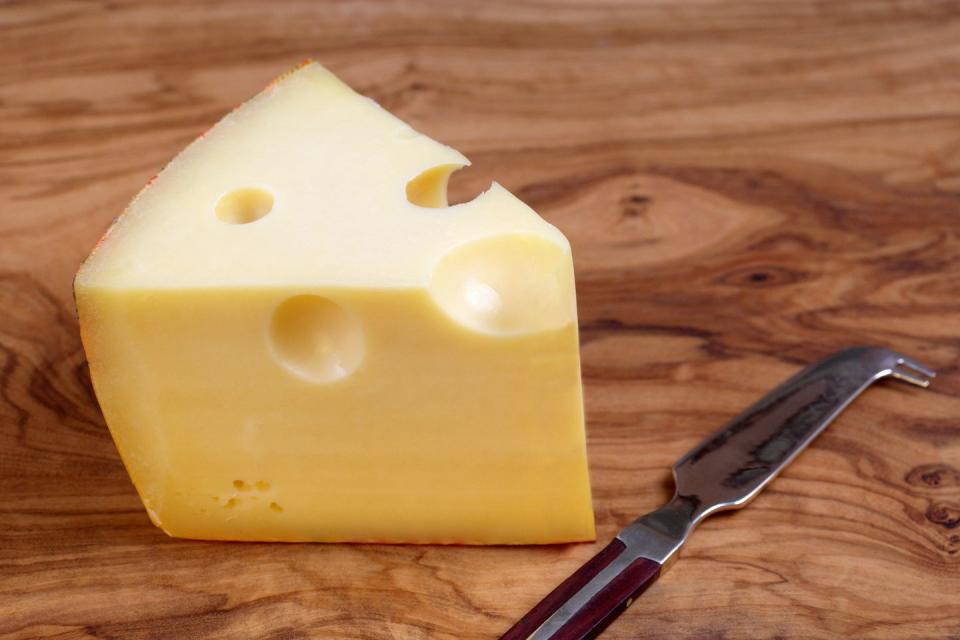
You Might Also Like

